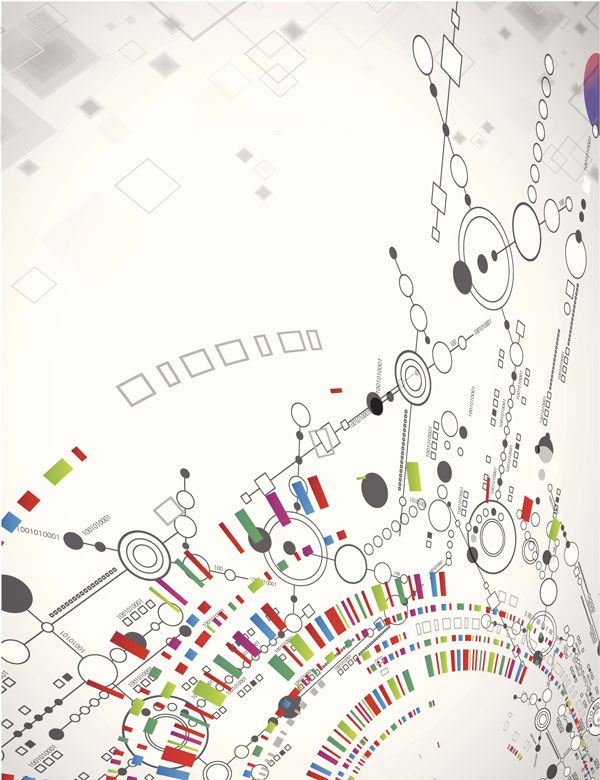Information management is not the most fashionable of subjects. Yet as Sherilyn Casiano puts forseth in her article, it is the key component to any organized thinking – and is especially valuable in personal wealth management.
“If you know the enemy and know yourself, you need not fear the result of a hundred battles. If you know yourself but not the enemy, for every victory gained you will also suffer a defeat. If you know neither the enemy nor yourself, you will succumb in every battle.”
– Sun Tzu, The Art of War
This oft-quoted wisdom of Sun Tzu captures the spirit of one of my core beliefs:
“The one with the most complete AND accurate information has the most control.”
As long as man has been communicating there has been the need to manage the information critical to his life and well-being. The earliest cuneiform texts, from the Ashurbanipal Library of ancient Nineveh, which includes the great epic Gilgamesh, also contained thousands of tablets dealing with legal, business and financial contracts. Even before that, people used memorized stories passed down through generations: oral histories preserved in verse or song. Other ways of tracking and managing critical information were tools such as a knotted string or beads for counting, art on rocks or cave walls, and giant stones aligned with the stars for tracking the changes of the seasons. From the dawn of time, humans have harnessed their creativity and ingenuity to track, manage and preserve vital information.
In my recent article for the March-April 2014 issue of The European Business Review, I mentioned that, whatever I speak or write about, I usually wind up preaching what I call “The Gospel of Information Management.” That’s because, for me, it all boils down to information. Information management is the lens through which I see the world, and it informs all my thinking and action in my work as a personal CFO to multimillionaires. Having comprehensive, complete and accurate information is essential to financial management and true control. Without a system to ensure the authenticity and accuracy of your financial information, any wealth strategy is useless. The same is true for corporate strategy. And it is especially true in the succession process, whether you are selling your business or passing it on to the next generation.
While I’ve articulated bits and pieces of my philosophy in other articles, I have never really presented, in one place, my complete thoughts on this subject. My intention in this article is to finally set down what I see as the basic mindset and key steps that constitute this “Gospel of Information Management,” particularly as it relates to the succession process and the preservation and management of personal wealth. For some of you, those who already understand the decisive strategic value of accurate information, this will be “preaching to the choir.” For others, it may be a reminder to get back to basics; still others may acquire some insights or new ways of thinking that can, hopefully, empower you in your business and personal lives.
Basic Mindset
It starts with a basic mindset: a mental attitude or inclination; a fixed state of mind. To have effective information management, you start with a mindset that says it’s okay for you to be interested in it. To want it. To demand it. To begin to foster a culture that values accuracy and integrity of information as a sacred duty. And not just a duty, but an aspiration. An organizing principle for living and achieving. The means to ensuring the fulfillment of both personal and corporate futures. It’s a way of viewing the world around you – a filter you look through – a context you think from. For without accurate information, how can you ever know where you are and if you’ve really reached your goals? How can you have clarity in your personal and business life?
Ironically, this is in direct contrast to western culture’s view of discipline and organization. There is a notion that there is something wrong or abnormal with being disciplined and organized. It seems that few humans are born with a predisposition, an instinct, for discipline and organization. I certainly had this gene, but some of my brothers and sisters definitely did not. And in spite of discipline and organization being pointed to as key factors in business and personal success, in the everyday world such people are often disparaged. Sigmund Freud gave us the psychological category “anal retentive.” “Control Freak” is another. One particularly unflattering label is “Bean Counters,” as if we should apologize for wanting things to add up properly, or for wanting an environment that’s neat and organized. It’s said that such people are not creative. Regimented. Fussy. Boring.
But just think where your business would be without your “Bean Counters”! They are the guardians of your business’s fiscal integrity! What business owner in their right mind would put the marketing department in charge of the purse strings? Where would your personal finances be without the person who balances the checkbook? Is it you? Or your spouse? Your secretary? There is someone accountable – isn’t there? Or is it just too much trouble? Not worth that extra effort? Except when, despite having an enviable net worth, a check bounces. Then there’s hell to pay.
Contrast that with Japanese culture, where organization, neatness, and discipline are valued so highly. These values aren’t just taught from birth. They are integrated into the culture from the architecture to the food, to the habit of saving before spending.
We seem to have a weird, schizophrenic, love-hate relationship with organization and discipline and thus get pushback from the not-so-organized majority.
A secondary issue has to do with what I call “The Human Factor,” which really breaks down into two parts, like two sides of the same coin. The first part is really a question of know-how. Most people have an incomplete skill set when it comes to effective information management. They may get parts of it. But most people have never been taught a real methodology for managing information effectively over time. Again, we weren’t born with an operator’s manual. While it’s true that the human mind is constantly trying to create structure and meaning out of the chaos of the world, it needs help. Ideally such help and guidance should come from parents, older siblings, and teachers. But when we look at the condition of the world, it’s clear that this education is incomplete.
If you have any lingering doubts, go to Amazon and search for books on Time Management. As of the day of this writing, there are 154,757 titles related to Time Management, 7,443 titles for Getting Organized and 59,274 for Personal Finance! Yet as vital as these are to our success in life, and as obviously in demand by the marketplace, there is hardly ever a course on them offered even at a college level, let alone in elementary or secondary school. When you get into my area of expertise, partnership and personal wealth accounting, there are no courses in any leading business school. There are courses on tax accounting, cost accounting, forensic accounting – but no “how-to” course that addresses the unique, specialized parameters for managing personal wealth of say, $100 million or more, with 70+ limited partnerships. For instance, a course on financial planning addresses just the tip of the iceberg when it comes to dealing with the real issues of wealth preservation and control faced by the Ultra Rich.
Key Steps: A Simple 8-Step Process
To have effective and reliable information now and into the future, follow these 8 simple steps. Keep in mind that they are interdependent and that neglecting any step will compromise the whole process.
1. Figure out what information will be required, for what purpose, and how it will be used.
This step takes considerable time and real thinking. This is not a “Big Data” process where you capture EVERYTHING with the hope that you’ll eventually sort it all out. Make an initial list of what specific information and documentation you think you’ll need in the future, and identify the information you already have. Then revisit that list regularly, adding to it or eliminating things that prove to be irrelevant.
2. Establish a way to easily and consistently capture that information and get started.
What are the various sources of the needed information? What protocols, practices, procedures, and tools will you use? Begin capturing the information.
3. Put the information through a process for verification, authentication, and reconciliation.
Of all the steps, this is the one most often overlooked. Usually it’s missing altogether, or is barely touched on. It typically is the most time- and labour-intensive step and, as such, the temptation is to shortcut it, or to just assume it’s a trusted source. But there are numerous risks related to neglecting this step.
These include: regulatory/legal risks; PEST (political/environmental/societal/technology) risks; reputational risks; the wide variety of “human factor” categories of risk, such as failure to do adequate succession planning or overall workforce planning; and the various types of cultural risks attendant upon expansion in a global economy.
I examined many of these risks in more depth in an article titled “Risk Intelligence for Personal Wealth” in the December 2013-January 2014 issue of The European Financial Review. In that article, I pointed out that the lack of an effective authentication and verification process is also the gap that is most often exploited by criminals, fraudsters, and Ponzi schemers on both the corporate and personal sides.
So I want to now add to this list the risk I call “information quality risk” – which I will define as the degree of risk that the information upon which you are basing your strategic (or other) business decisions may be incomplete, inaccurate, or not-validated (not authenticated). While preparing the previously mentioned article, I did a Google search on graphic representations of “Risk Models.” I invite you to do this yourself. But when you look beyond the striking colours and clever arrangements of components and arrows, here’s what you’ll find: virtually all of the “corporate risk model” flowcharts had a step labeled “gather the relevant information.” But only rarely did they THEN have that CRUCIAL additional step of assessing the quality of that information upon which ALL the next steps in their risk analysis models were based, including the strategic risk assessments and conclusions and recommendations to senior management. The same holds true for your personal wealth. What’s your process for validating the information you get from your financial advisor? Do you just trust? There is another old saying: “In God we trust. Everyone else we verify.”
4. The next vital step is to set up triggers for updating that information.
The builders of Stonehenge moved a post around a series of holes outside the great stone circle, and other forms of reminders, to know when to plant crops. These days we can accomplish this via a digital calendaring system and auto-reminders (and even the occasional Post-It Note).
5. Create a system and repository, an organized and secure way to archive the information.
In this new century, that will most likely be in a digital form, on your own server or in the cloud. But having hard copies, stored off-site and out-of-state or even out-of-country if you live in a hurricane, tornado, or earthquake zone, is also highly recommended. Be sure to create a detailed inventory list of what is in each storage box, and save this list in a secure form that is easily retrieved. Just labeling the box “TAXES” is not adequate for quick and easy retrieval, especially when things get moved between several storage facilities.
Recently I worked with a client to purge files we had stored in such an off-site storage unit. We sat down with my inventories binder and were able to decide very quickly, in less than an hour, what needed to be saved and what could be eliminated. Without the inventories, this would have been a nightmare. It also enables you to send someone else to the facility to retrieve a document, such as a deed or original contract, which saves time and money.
6. Have a method and process for integrating the information.
This step has several parts:
• Decide on what platform you will use to capture the information, keeping in mind the type and ultimate uses of the information. It’s preferable to use a platform that will not only capture the data needed, but also make it easy to produce the final output desired, be it a report, a graph, a dashboard, a video, a mash-up, etc.
• Having to export the data to another, or several other, platforms adds considerable time, aggravation, risk of data loss, and expense to the process. For example, trying to synchronize documents between MS Word 2003 and later versions, like Word 2007, or between Word and the open-source program Open Office, often creates continuity issues. • Therefore, be sure that whatever platform you use is capable of transferring data to other platforms while maintaining data integrity.
• Determine who the audience is for the final output. For instance, in personal wealth management, the main people who need to see and receive the information might be the following: the person in the family office accountable for collecting and processing the information; the asset owner; specified family members; tax advisors; trust and estate attorneys; and investment advisors. Each requires just the information relevant to them, in a certain form that is acceptable and useful to them. This may mean the development of several different methods and formats to get the job done satisfactorily. The larger the enterprise, the more critical this step becomes.
7. Once the information is integrated, you need a format and templates that let you present the information in a way that is easy to understand and enables one to grasp the full implications of the information.
This is one place where your creative and artistic side can be expressed. But focus on providing sufficient information that will enhance clarity, understanding, and actionable insight. This usually means providing more information than just a big picture snapshot. You need enough additional, clarifying information to get the job done, yet nowhere near everything you’ve got. My big complaint with financial dashboards, for example, is that they look impressive, but there is little ACTIONABLE intelligence to be gained from them. The same is true of the typical financial reports that, because of regulatory requirements, give you ALL the data in one 100+ page spreadsheet in 6 point font. The data you really need is in there somewhere, but good luck getting it out! Both lead to what I call an “Illusion of Control” rather than True Control, the first because you think you’re getting a complete picture when you really aren’t, and the second because the overwhelming complexity makes the information unusable in any practical, actionable way.
8. Codify this process into a system that is replicable and consistent over time, and that employs sufficient duplication and back-up.
Without this, you face the daunting task of always redoing the same things. Ideally, anyone who is authorized should be able to get the needed information easily. For example, if you were on a trip and you wanted a file or document emailed to you, and your personal secretary was out sick, the person covering for them, the receptionist, the office manager, or whomever, should be able to quickly find it and send it. But if your secretary files things alphabetically and you file things based on subject (tax stuff under “TAX,” board stuff under “BOARD”), or if there’s a mix of styles and systems, getting your information may be a real problem.
Baby boomers and the coming capital shortage
Baby boomers are people born during the Post–World War II period, between the years 1946 and 1964. Over 76 million people fall into this category in the US alone.
For individuals and businesses with sufficient resources and an eye for acquisition, the number of businesses soon to be up for sale will be in the millions. It is shaping up to be a buyers’ market. The accounting firm Deloitte has coined the term “Nano” to describe the shortage of private equity capital expected to be available to meet such a spike in the market of businesses for sale.
In such a context, the idea and practice of Strategic Information Management is even more important to the seller, his/her business, and the family.
Start Earlier Rather Than Later
Developing a clear idea of what you want to accomplish with your sale is extremely important. If you haven’t already done so, start to manage your business so as to maximize its valuation. Besides the common tactics of increasing sales volume, reducing costs, and resisting wage hikes, get your processes documented and improved. Having completely documented processes for your entire enterprise, such as results from quality initiatives like Six Sigma or ISO Certification, not only results in a better functioning company, but they (the process maps and related documentation) are also an extremely valuable asset in and of themselves. Which company would you prefer to buy, one where the “how-to” exists only in the minds of the employees, and vanishes if they leave, or one that has fully documented processes across all levels AND a skilled and dedicated workforce experienced in executing them?
Managing for Ease of Due Diligence
When the time comes to sell to an interested investor, you will usually face the due diligence process initiated by that investor, where you are asked for hundreds, sometimes thousands, of documents to help them verify the claims you’ve made regarding the value of your enterprise. This usually happens over a short period of time, but the whole valuation process can often take up to a year. This is one of those areas where poor information and document management come back to haunt the company. Typically, it’s a mad scramble to pull all the information together. Not just the financials, which almost always contain some significant, material errors, but the mountains of non-financial documentation – legal, HR, IT, etc.
If you are selling your company, it’s useful to reverse roles and ask the question: “If I were buying this company, what would I want to know?” Think about it: if you were going to buy a competitor, or complementer, or client base, or technological advantage, would you leave any stone unturned? Get a hold of a Business “Due Diligence Checklist.” Go through each section. Are you ready with the information to satisfy those requirements? If you are, I applaud you, bravo, but don’t get complacent; expect the unexpected. Be intentionally, optimistically, and pro-actively paranoid.
Until you have certainty. When the check clears your bank account, that’s certainty.
Well, there you have it. “The Gospel of Information Management” and some of the many ways it has relevance for and impact on the succession process, both on the corporate side and the personal/family wealth side.
To sum it all up, I invite you to embrace an Information Management Mindset. One that holds accuracy and accessibility of information sacred. Such a mindset calls forth organized thinking and acting, not as some psychological strategy for control and avoiding loss, but as the keys to the fulfillment of your personal and corporate future.
About the Author
Sherilyn Casiano is the Founder and CEO of S.I. Williams Wealth Management, LLC, in New York City. She holds an MBA from Columbia University. She was a key member of KKR’s personal wealth group service for the New York general partners. She has headed her own multi-family office for 14 years. For further information about her Dynamic Wealth Information Management System or help with establishing your own dedicated family office, call (212) 886-9078. Look for her soon to be released book Take Back Control for a more complete guide to establishing your own family office.



































